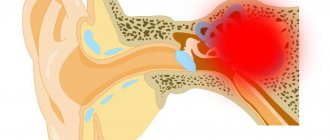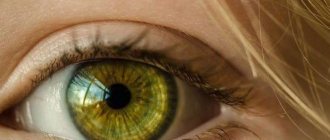Diagnosis of acute ischemia during examination by a vascular surgeon
The classic picture of acute ischemia is determined by six symptoms:
- Sudden leg pain
- Pale skin
- Absence or deficit of movement in the affected limb
- Absence of pulse in the affected limb
- Decreased skin sensitivity
- Decreased skin temperature
The pain may be constant or with passive movement of the affected limb. With an embolic blockage, the pain is usually sudden and very intense. With thrombosis, the pain intensity is much less, and sometimes there is a progressive increase in intermittent claudication.
Some more probable causes of the symptom
In some cases, a paralyzed leg after a stroke swells due to functional failures in the functioning of internal organs. Often the pathological process spreads to a healthy limb. Treatment of the symptom here is directly related to the elimination of the provoking factor. The approaches listed above will not give a lasting effect. Only after the cause of the condition has been eliminated or specialized therapy has begun, the clinical picture begins to change for the better.
Chronic heart failure
If the patient had this condition initially, then after the stroke it will progress due to lack of physical activity. The heart is no longer able to cope with processing the entire volume of blood in the usual rhythm, so fluid stagnates in the lower extremities and they swell. The capillaries are subject to increased stress, which causes the blood plasma to peel off and enter the intercellular space.
The following techniques are used to combat the condition:
- the load on the heart decreases;
- the endurance of the heart muscle increases;
- tissue swelling is eliminated.
Swelling is eliminated by taking diuretics. Furasemide, Torasemide, and Hypothiazide are used for medicinal purposes. They come in combination with anticoagulants and antiplatelet agents. If your legs swell, be sure to monitor your pulse and blood pressure.
Varicose veins
This condition is characterized by a characteristic clinical picture, thanks to which an experienced doctor, after examination, will make the correct diagnosis and prescribe appropriate treatment. Drug therapy is aimed at normalizing blood flow in the legs, increasing the tone of the vascular walls and preventing the formation of blood clots. The main task falls on venotonics. Preparations with diosmin – “Detralex”, “Phlebodia” - have a high degree of effectiveness.
Read also: Are seizures after a stroke life-threatening?
Sometimes physiotherapeutic treatment of the swollen area and the use of compression garments are allowed. Treatment should begin at the first symptoms of the disease. Against this background, thrombophlebitis can quickly develop, which in this situation is extremely dangerous and does not respond well to therapy.
Acute deep vein thrombosis
Vava filter for thrombosis
In this case, swelling of the limb is one-sided, accompanied by cyanosis of the skin and severe pain. If the lumen of the inferior vena cava is blocked, both legs swell at once. In the initial stages of the disease, it is usually possible to manage with conservative therapy - taking anticoagulants, for example, Heparin. In advanced cases, removal of the blood clot by surgery or installation of a vena cava filter is required.
Ultrasound duplex scanning
Ultrasound duplex scanning allows you to determine the patency of the arteries, localize the site of blockage of the vessel and the state of blood flow below the site of occlusion. Often, in acute ischemia, this diagnosis is enough to determine treatment tactics and send the patient to the operating table. With an embolism or rupture, the arteries below the blockage are usually empty or thrombosed, and blood flow in them is not detectable. Blood flow in the veins is sharply slowed down. With thrombosis, blood flow can be detected below the site of blockage, but its speed is sharply reduced; most often, blood flow through the main vessels cannot be detected, but blood flow can be seen through collaterals. As a rule, this is due to
Angiography
To resolve the issue, surgical tactics require information about the patency of the arteries of the affected limb. The choice of technique for restoring blood circulation depends on the condition of the inflow pathways to the affected limb and the vascular bed below the site of blockage. In addition, angiography can distinguish embolism from thrombosis against the background of atherosclerotic narrowing. During an angiographic examination, endovascular treatment can be undertaken in the form of thrombectomy and angioplasty of the affected segments or local thrombolytic therapy can be performed.
Arterial embolism is an acute blockage of a vessel by a thrombus or other object brought from other parts of the vascular bed. Most often, vascular surgeons deal with thromboembolism from the heart cavity during a heart attack or atrial fibrillation, from the cavity of the aneurysm of the vessel overlying the blocked artery.
Consequences of acute cessation of blood flow
The sudden cessation of blood flow leads to the phenomenon of acute ischemia. The organs and tissues that are supplied by this artery lack nutrition and oxygen, so they begin to slowly die. The most specialized tissues are affected first—nervous, muscle, and finally skin. The body tries to restore blood circulation by opening additional bypass pathways for blood flow, so sometimes tissue death is stopped. But the likelihood of such an outcome is low. In any case, acute ischemia leads either to gangrene or to the development of chronic circulatory deficiency - critical ischemia.
Methods for treating swelling of the legs
Treatment that effectively relieves edema is aimed at stimulating the functioning of blood vessels. Since communication between different parts of the bloodstream becomes difficult, individual vessels are in a state of constant lack of tone. This phenomenon provokes the accumulation of fluid in the tissues.
To prevent additional swelling of the limb, two types of manipulations are required:
- massage using ice cubes - the ice cube contains a decoction of a plant substrate (eucalyptus, yarrow, peppermint, oak bark);
- nightly cool compresses - moistened gauze is wrapped around a swollen limb, wrapped in plastic. In the morning after removing the compress, the limb is massaged.
Both methods lead to forced vasoconstriction, additional displacement of moisture from the muscular system. Using this method, the elasticity of the blood vessels is restored and they return to their normal volume. If there is a significant decrease in leg volume and visible improvement, the compresses are stopped and replaced with frequent massages.
Stages of acute ischemia
1. Sudden pain in the leg, coldness, reduction in walking distance. If the collateral vessels are good, ischemia may stop at this stage with the development of intermittent claudication or critical ischemia. Most often, this stage is observed with thrombosis of altered arteries, if their lumen was previously narrowed and collateral circulation developed. At this stage, the operation is carried out after the necessary additional examination and preparation. The color of the leg may be pale or take on a bluish tint (cyanosis). The result of surgical treatment is excellent. Recovery of leg function is most often complete.
2. The symptoms described above are accompanied by weakness in the leg, which gradually worsens to the point of paralysis. However, passive movements in the fingers and other joints are possible. Such phenomena are associated with the death of nerve endings and blockade of nerve impulse transmission along the nerves. This stage of ischemia is an absolute indication for emergency surgery, since independent restoration of blood flow is impossible, and delay in intervention will lead to gangrene. Timely surgery restores blood flow with minimal loss of limb function. Numbness of the foot and fingers remains, and swelling of the leg persists for a long time.
3. Muscle death begins, first there are foci of muscle necrosis, muscle pain, and dense swelling of the lower leg. Then comes numbness of the fingers, ankle joint, and knee joint (muscle contracture). The muscles die completely. If the muscles are partially lost after restoration of blood flow and a long postoperative period, the leg may be preserved, but walking will be difficult. In the case of muscle contracture, amputation is necessary, since restoration of blood flow leads to the death of a person from poisoning with decay products.
Swelling of the limbs as a consequence of a stroke
If, after suffering a blow, one side of a person’s body is paralyzed, then it will require enhanced care. Lack of physical activity after just a few weeks can lead to disruption of physiological processes in the limbs. One of the symptoms of such failures is the appearance of edema.
In order for a paralyzed arm or leg to respond adequately to rehabilitation therapy and ultimately work, it is necessary to monitor its condition, combat negative manifestations and prevent them.
Treatment of a pathological phenomenon
To understand why an arm or leg swells after a stroke, you need to see a doctor. Most often this is the result of slower circulation in the tissues of blood and lymph. Swelling is often accompanied by the appearance of purple spots and a decrease in skin temperature.
Here are a few techniques that allow you to quickly get rid of swelling in this case:
- daily fluid volume is reduced to 1 liter;
- the daily amount of salt is reduced to 1-1.5 g;
- the volume of urine excreted is monitored, which should be at least 75% of the volume of fluid consumed;
- taking diuretics, but only with the permission of the doctor and within the dosages prescribed by him.
Sometimes the arms and legs swell after a stroke due to increased capillary permeability, inflammatory damage to the lymph nodes, excessive increases in ambient temperature, or medications. In some cases, it is enough to eliminate the effect of the irritant, in others it will be necessary to carry out additional therapy.
Prevention of swelling of the limbs
To prevent swelling of the arms and legs after a stroke, a bedridden or inactive patient should be provided with appropriate care. Performing a number of simple manipulations will reduce the likelihood of a problem arising as a result of metabolic disturbances to a minimum.
Read also: Stroke: psychosomatics and consequences
Swelling in the extremities will not occur if:
- regularly change the position of the patient’s limbs, at least once every two hours during the daytime and once every 4-6 hours at night;
- do not allow the victim’s immobile limbs to hang down;
- when a person is sitting, place his paralyzed hand on a thick pillow, slightly bent, palm down and with fingers apart;
- In a sitting position, place your legs on a stand or bench, and support your calves with a pillow;
- encourage the patient to move his limbs or perform passive movements with him;
- Massage your limbs daily using natural oils with a mild irritating effect.
Your doctor will tell you in detail how and what to do to prevent edema after a stroke. He will select the optimal set of exercises and tell you about the nuances of conducting a specialized massage.
Diagnosis of thrombosis or embolism
In addition to the clinical picture, it is necessary to use special research methods for diagnosis.
Ultrasound diagnostics makes it possible to clarify the nature of occlusion and identify atherosclerotic plaques during thrombosis. Thrombosis differs from embolism in the initial damage to the arteries; in embolism, the arteries are most often not affected.
Angiography is performed on the operating table to clarify the receiving vascular bed and allows you to determine the nature of the surgical intervention
Multislice computed tomography is performed when there is time for a detailed diagnosis and allows you to very accurately identify the nature of the lesions and determine treatment tactics.











